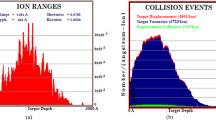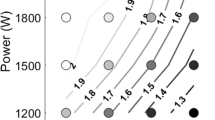Abstract
The principle cause of cracks in laser-welded, Au-coated, optoelectronic materials with a phosphorus (P)-containing underlayer is studied experimentally and numerically modeled. Experimental results find that the crack formation is due to the existence of a P-containing underlayer and is not due to the thickness of the Au plating layer. The P-containing underlayer introduced by a electroless plating process may generate a low melting, P-rich segregation layer during solidification. A finite-element method analysis is performed to evaluate the residual stresses variation of the low melting P-rich segregation layer. Results show that the high residual tensile stresses of the P-rich segregation layer are generated by solidification shrinkage. A crack may be initiated by this residual stress. Both experimental observations and numerical calculations indicate that the crack formation mechanism in laser-welded Au-coated optoelectronic materials is directly related to the low melting P-rich segregation layer and its associated high tensile stresses. Based on these results, a Ni underlayer with P-free electroplating, instead of P-containing electroless plating, should be used prior to plating Au on optoelectronic materials to prevent crack formation in laser welded Au-coated optoelectronic materials.
Similar content being viewed by others
References
C. Dawes, Laser Welding, (Cambridge, England: Woodhead Publishing, 1992), ch.4.
W.H. Cheng, W.H. Wang and J.C. Chen, IEEE Trans. Comp., Hybrids, Manu. Technol., Part B 19, 764 (1996).
Metals Handbook, 8th Ed., 8, (Metals Park, OH: ASM, 1973), p. 266.
Kovar Alloy Handbook (PA: Westinghouse Electric Co., 1971).
R.J. Coyle, P.P. Solan, P.L. Sakach and X.L. Yeh, Proc. ASM Intl., 2nd Conf. on Trends in Welding Research, (Metals Park, OH: ASM Intl., 1989), p. 661.
M.R Matthews, B.M. Macdonald and K.R Preston, IEEE Trans. Comp., Hybrids and Manu. Technol. 3, 798 (1990).
S.C. Wang, S. Chi, K.C. Hsieh, Y.D. Yang and W.H. Cheng, J. Electron. Mater. 26, L21 (1997).
J.L. Vossen and W. Kern, Thin Film Processes, (New York: Academic Press, 1978), Ch. III.
J.C. Lippold and W.F. Savage, Welding Research Supplement 61, 88s (1982).
B. Valk, R. Battig and O. Anthamatren, Opt. Eng. 34, 2675 (1995).
M.K. Song, S.G. Kang, N.H. Hwang, H.T. Lee, S.S. Park and K.E. Pyun, IEEE Trans. Comp., Hybridsand Manuf. Technol. 19, 758 (1996).
R. Chanchani and P.M. Hall, IEEE Trans. Comp., Hybrids and Manu. Technol. 13, 743 (1990).
E. Suhir, J. Lightwave Technol. 12, 1766 (1994).
Metals Handbook, 9th Ed., (Metals Park, OH: ASM, 1992), pp. 2–73 and 2–200.
MARC 6.3, User Guide, (Palo Alto, CA: MARC Analysis Research Corporation, 1996).
MENTAL II, User Guide, Palo Alto, CA: MARC Analysis Research Corporation, 1996).
J.H. Lau and Y.H. Pao, Solder joint reliability of BGA, CSP, flip chips, and fine pitch SMT assemblies (New York: McGraw-Hill, 1997), ch. 4.
W.H. Cheng, C.H. Chen, S.C. Wang, Y.K. Tu and K.C. Hsieh, J. Electron. Mater. 27 (7), L47 (1998).
Author information
Authors and Affiliations
Rights and permissions
About this article
Cite this article
Cheng, W.H., Sheen, M.T., Kuang, J.H. et al. The principle cause of crack defects in optoelectronic materials with phosphorus-containing underlayer. J. Electron. Mater. 28, 50–56 (1999). https://doi.org/10.1007/s11664-999-0194-8
Received:
Accepted:
Issue Date:
DOI: https://doi.org/10.1007/s11664-999-0194-8




